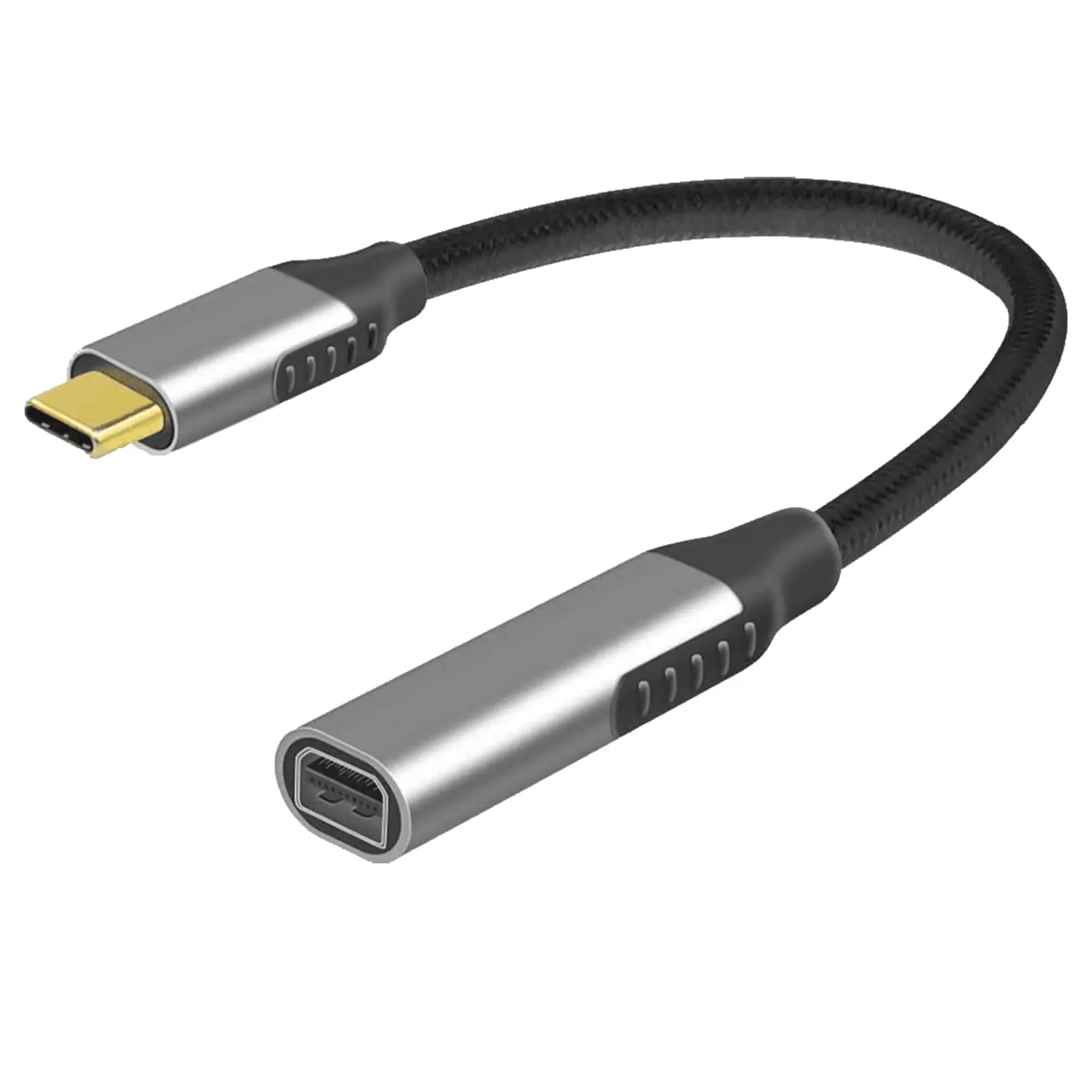How does a USB-C to Lightning to DisplayPort adapter work?


USB-C to Lightning to DisplayPort adapters are becoming increasingly popular as more devices adopt the USB-C standard. These adapters allow users to connect their Lightning devices, such as iPhones and iPads, to DisplayPort monitors or projectors. But how exactly do these adapters work? In this article, we will explore the inner workings of USB-C to Lightning to DisplayPort adapters, compare them to other types of adapters, and discuss their benefits.
How does a USB-C to Lightning to DisplayPort adapter work?
USB-C to Lightning to DisplayPort adapters work by converting the digital signal from the Lightning port on your device to the DisplayPort signal required by your monitor or projector. This conversion process involves several steps:
1. Signal Conversion: The adapter takes the digital signal from the Lightning port and converts it into a format that can be understood by the DisplayPort. This conversion is necessary because the Lightning port uses a different signaling protocol than the DisplayPort.
2. Resolution and Refresh Rate Support: The adapter also ensures that the resolution and refresh rate of the display are properly supported. It communicates with the device and the display to determine the optimal settings for the best possible viewing experience.
3. Power Delivery: USB-C to Lightning to DisplayPort adapters often support power delivery, which means they can charge your device while it is connected to the display. This is especially useful for devices with limited battery life, as it allows you to use them for extended periods without worrying about running out of power.
Comparison with other types of adapters
USB-C to Lightning to DisplayPort adapters offer several advantages over other types of adapters, such as HDMI or VGA. Here are some key points of comparison:
1. Video Quality: DisplayPort generally offers better video quality compared to HDMI or VGA. It supports higher resolutions and refresh rates, making it ideal for tasks that require high-definition visuals, such as gaming or video editing.
2. Compatibility: USB-C to Lightning to DisplayPort adapters are specifically designed for Lightning devices, ensuring seamless compatibility. HDMI or VGA adapters may require additional converters or dongles to connect to Lightning devices, which can be cumbersome and may result in a loss of video quality.
3. Power Delivery: As mentioned earlier, USB-C to Lightning to DisplayPort adapters often support power delivery, allowing you to charge your device while using it. HDMI or VGA adapters typically do not offer this feature.
4. Audio Support: DisplayPort supports audio transmission, which means you can connect your Lightning device to a monitor or projector with built-in speakers and enjoy both video and audio without the need for additional cables or adapters. HDMI also supports audio, but VGA does not.
Benefits of USB-C to Lightning to DisplayPort adapters
USB-C to Lightning to DisplayPort adapters offer several benefits that make them a popular choice among users. Here are some of the key advantages:
1. Versatility: USB-C to Lightning to DisplayPort adapters allow you to connect your Lightning devices to a wide range of DisplayPort monitors or projectors. This versatility makes them suitable for various applications, including presentations, gaming, and multimedia consumption.
2. Portability: These adapters are compact and lightweight, making them easy to carry around. Whether you are traveling for work or leisure, you can conveniently connect your Lightning device to a DisplayPort display without the need for bulky equipment.
3. Plug-and-Play: USB-C to Lightning to DisplayPort adapters are typically plug-and-play, meaning you can simply connect them to your device and the display without the need for additional software or drivers. This makes them user-friendly and convenient to use.
4. Future-Proofing: USB-C is becoming the standard for connectivity, and many devices, including Apple’s latest iPhones and iPads, now feature USB-C ports. By investing in a USB-C to Lightning to DisplayPort adapter, you are future-proofing your setup and ensuring compatibility with upcoming devices.
In conclusion, USB-C to Lightning to DisplayPort adapters enable users to connect their Lightning devices to DisplayPort monitors or projectors. These adapters work by converting the digital signal from the Lightning port to the DisplayPort signal, ensuring compatibility and optimal video quality. Compared to other types of adapters, USB-C to Lightning to DisplayPort adapters offer better video quality, seamless compatibility, power delivery, and audio support. Their versatility, portability, plug-and-play functionality, and future-proofing capabilities make them a popular choice among users. So, if you are looking to connect your Lightning device to a DisplayPort display, a USB-C to Lightning to DisplayPort adapter is the way to go.
Recent Posts
How do I create an engaging and informative online quiz or assessment?
Creating an engaging and informative online quiz or assessment can be a powerful tool for… Read More
What are the most effective methods for managing and reducing work-related stress in the hospitality industry?
Work-related stress is a common issue in the hospitality industry, where employees often face long… Read More
How can I improve my assertiveness and communication skills in a leadership position?
In a leadership position, assertiveness and effective communication skills are crucial for success. Being able… Read More
What are the key elements of a successful employee recognition and rewards program?
Employee recognition and rewards programs play a crucial role in motivating and engaging employees, as… Read More
How do I effectively manage and respond to customer feedback and reviews?
Customer feedback and online reviews play a crucial role in shaping a company's reputation and… Read More
What are the best strategies for effective time management as a stay-at-home parent?
Effective time management is crucial for stay-at-home parents who juggle multiple responsibilities on a daily… Read More